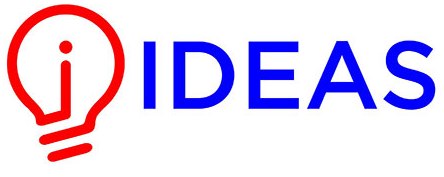Abbreviations: LDCT: Low-Dose Computed Tomography; NLST: National Lung Screening Trial; CMS: Centers for Medicare & Medicaid Services; CXR: Chest X-ray
Opinion
Lung cancer is the leading cause of cancer related mortality worldwide [1-5]. The data from the US National Lung Screening Trial (NLST) showed annual low-dose computed tomography (LDCT) for lung cancer screening in the high-risk population reduced lung cancer mortality by 20% compared with a chest x-ray (CXR) [6]. With the Centers for Medicare & Medicaid Services (CMS) covering lung cancer screening, the access to LDCT has dramatically improved across the nation. The current eligibility criteria include asymptomatic patients between 55 – 77 years with a tobacco smoking history of at least 30 pack-years and includes current smokers or people who have quit smoking within the last 15 years. Smoking continues to be a major contributor to morbidity and mortality [7] and is associated with a huge economic burden. Novel minimally invasive techniques have opened the thoracic cavity to the pulmonologists and patients commonly do not need surgery for diagnosis [8,9] which are offered at our institution.
The purpose of this study is to evaluate the impact of electromagnetic navigation bronchoscopy in a small community hospital with a robust lung cancer program. Over a quarter of lung nodules are peripheral and flexible bronchoscopy has a poor diagnostic yield [10]. Surgical lung biopsy and transthoracic CT guided biopsy have good diagnostic yield for peripheral lesions but have more risk of complications. The diagnostic yield of ENB varies between 40-100% [11]. Factors affecting the diagnostic yield include size of the lesion, presence of air bronchogram sign, experience of the proceduralist among others. Most of the data about ENB is from larger institutions and is biased. The aim of the study was to evaluate the performance of the technique in a smaller institution where the volume is lower. Eighteen consecutive patients with peripheral lung nodules were biopsied using ENB and fluoroscopy. All lesions were located beyond the segmental bronchus that are less than 2 cm in diameter in the outer third of the lung.
Mean age of the patient population was 67 years. 12/18 were men. Average pack years for the cohort was 50 years. Median size of the lesion was 2 cm. 7/18(39%) yielded a diagnosis of malignancy, an additional 4 malignancies were made with either a CT guided biopsy/ surgical resection. 7 of the 18 were found to be benign either after surgical lung biopsy or a negative CT guided biopsy and radiological stability for 2 years. Overall yield of ENB was 7/11(64%). No major complications were encountered. No pneumothoraxes or life-threatening bleeding occurred in our cohort. Overall ENB helped get diagnosis in an outpatient setting and is safe and effective way of diagnosis for peripheral lung nodules. The yield after optimal patient selection is acceptable and the rate of complications low even for inexperienced bronchoscopists. Limitations of the study include a single center study with a small sample size. More prospective data needs to be accumulated.
References
- Gupta A, Palkar AV, Narwal P (2018) Case of chest pain in a young man. BMJ Case Rep.
- Gupta A, Gulati S (2017) Mesalamine induced eosinophilic pneumonia. Respir Med Case Rep 21: 116-117.
- Palkar AV, Gupta A, Greenstein Y, Gottesman E (2018) Primary cardiac angiosarcoma: a rare cause of diffuse alveolar haemorrhage. BMJ Case Rep.
- Gupta A, Palkar A, Narwal P (2018) Papillary lung adenocarcinoma with psammomatous calcifications. Respir Med Case Rep 25: 89-90.
- Gupta Ankit, Palkar Atul, Narwal Priya, Kataria Ashish (2018) Pulmonary synovial sarcoma. Respir Med Case Rep 25: 309-310.
- Aberle DR, Adams AM, Berg CD, Black WC, Clapp JD, et al. (2011) Reduced lung-cancer mortality with low-dose computed tomographic screening. New Engl J Med 365(5): 395-409.
- (2014) The Health Consequences of Smoking-50 Years of Progress: A Report of the Surgeon General. Atlanta: U.S. Department of Health and Human Services, Centers for Disease Control and Prevention, National Center for Chronic Disease Prevention and Health Promotion, Office on Smoking and Health.
- Gupta A, Youness H, Dhillon SS, Harris K (2019) The value of using radial endobronchial ultrasound to guide transbronchial lung cryobiopsy. Review J Thorac Dis 11(1): 329-334.
- Gupta A, Yaghoubian S, Carroll F, Harris K (2019) Intraoperative electromagnetic navigation bronchoscopy interference with cardiac monitoring. J Bronchol Interv Pulmonol 26(1): e3-e5.
- Gex G, Pralong JA, Combescure C, Seijo L, Rochat T, et al. (2014) Diagnostic yield and safety of electromagnetic navigation bronchoscopy for lung nodules: a systematic review and meta-analysis. Respiration 87(2): 165-176.
- Weisan Zhang, Shuo Chen, Xifeng Dong, Ping Lei (2015) Meta-analysis of the diagnostic yield and safety of electromagnetic navigation bronchoscopy for lung nodules. J Thorac Dis 7(5): 799-809.

 Opinion
Opinion 







